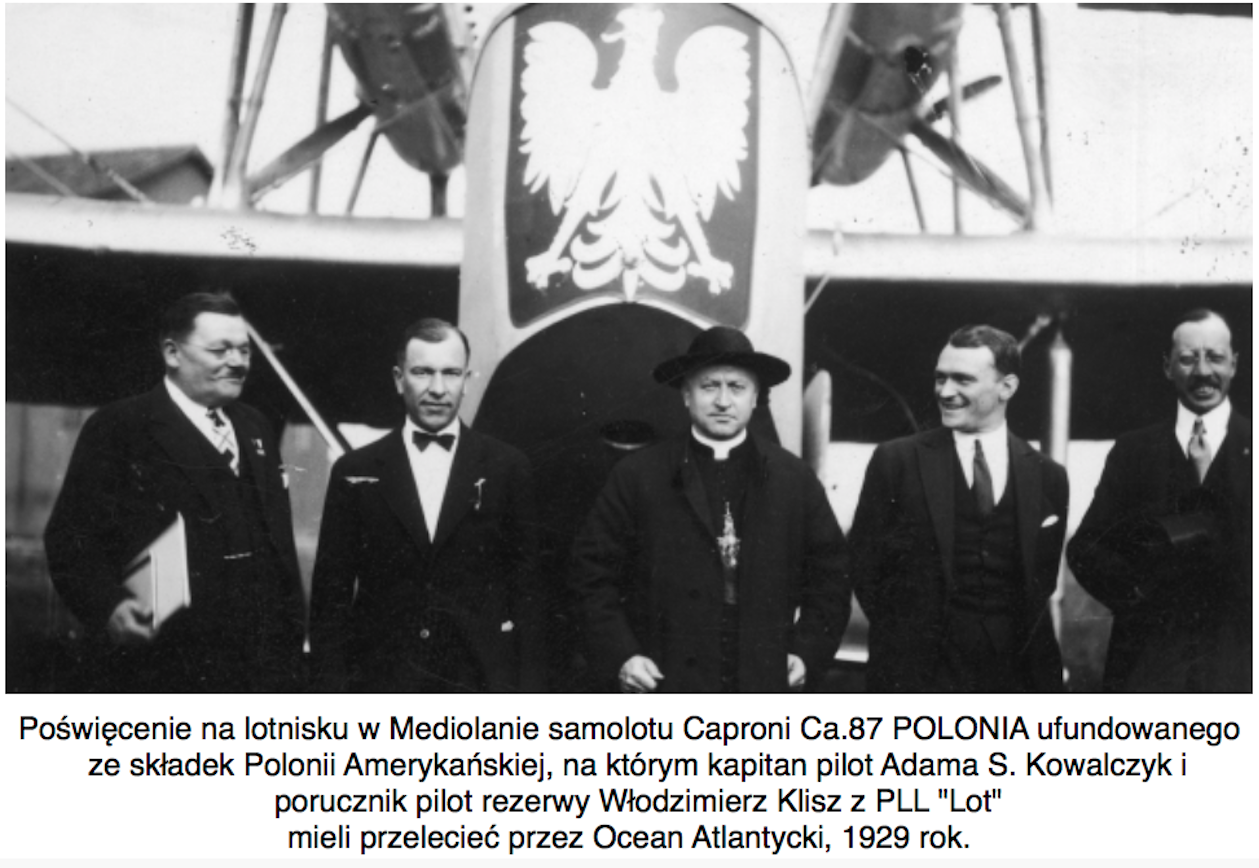Kraków 2017-10-30
The Caproni Caproni Ca.87 aircraft, with its own name “Polonia”, was to fly from Europe to America over the Atlantic Ocean.
The Caproni aircraft.
After the Great World War, Italy was one of the leading aircraft manufacturers. Several aircraft manufacturers operated there, including the Caproni company. In 1925, the Caproni Ca.73 passenger aircraft was developed based on the bomber aircraft. The aircraft was built in a biplane configuration, where the lower wing had a larger span than the upper one. In addition, the ailerons were placed only on the lower wing. Two engines were installed on the airframe. They were placed in a common gondola placed between the lower and upper wing. One engine powered the tractor propeller, and the other engine powered the pusher propeller. It was a good and bold solution that was widely used. The fuselage is relatively spacious, so it was easy to transform the bomber aircraft into a passenger aircraft. The pilots sat in an open cockpit, and ten passengers inside the fuselage.
However, the history of the design is more complicated. During the Great World War, the Caproni company built the Ca.3 bomber (linear) aircraft. When the Italian Regia Aeronautica aviation was reborn in 1923, the Caproni Ca.3 aircraft were accepted back into service, which were already outdated and required replacement with newer designs. The Caproni company developed a new aircraft designated Ca.73. The machine proved successful and various versions and variants, military and civilian, were built on its basis. These were the aircraft:
Ca.73 – aircraft powered by Isotta-Fraschini Asso 500 engines.
Ca.73bis – passenger aircraft powered by Lorraine-Dietrich engines.
Ca.73ter (later rebuilt into the Ca.82 version) – bomber version with machine guns and bombs in the fuselage.
Ca.73 quarter G (later rebuilt to Ca.89 version) – bomber with a firing position in the front, with bomb launchers and a position for using gas weapons.
Ca.74 (later rebuilt to Ca.80 version) – version with Bristol Jupiter engines.
Ca.80S – transport version for transporting wounded and transporting paratroopers.
The Ca.74 aircraft were redesignated as Ca.80. The Ca.74/80 aircraft remained in service until 1934. In 1926, the aircraft was used in the war in North Africa.
T-T Caproni Ca.73 data:
Crew of two pilots. The fuselage had a cabin for 10 passengers. Dimensions; length 15.10 m (49 ft 7 in), wingspan 25.00 m (82 ft 0 in), height 5.60 m (18 ft 5 in), wing area 143.0 m2 (1,539 ft2), empty weight 3,400 kg (7,496 lb), gross weight 5,390 kg (11,883 lb). Engines 2 × Isotta-Fraschini Asso, 2 x 373 kW (2 x 500 hp). Maximum speed 180 km/h. Flight time up to 3 hours. Ceiling 4,600 m (15,080 ft).
The Polonia aircraft.
The Caproni Ca.87 aircraft was ordered at the end of 1927 by the Polish Committee, which, with contributions from the American Polonia, intended to carry out a flight across the Atlantic Ocean, made by a Polish crew. The impulse was the successful flight of Charles Lindberg. The flight was planned for July 1929. It was to be made westward from Europe to America, which was a more difficult direction.
The Polonia aircraft was ordered from the Caproni factory in a single copy. The base for the aircraft was the Caproni Ca.73ter design, which underwent major modifications. The aircraft’s fuselage was made in a way that allowed for safe water landing, i.e. of the avion-marin type. Additional fuel tanks were placed inside the fuselage, which were to provide a range of over 5,000 km.
The number of engines was increased to four. The original had two engines. The engines were placed under two in two gondolas. The front engines had two-blade, pulling propellers. The rear engines had four-blade, pusher propellers. Engines 4 × Isotta-Fraschini Asso 200, 4 x 195 kW. The selected engines were to ensure low failure rate.
The aircraft received the designation Caproni Ca.87 “Polonia”. The aircraft, as planned, was completed in May 1929. The first test flight was performed on June 15, 1929. Despite four engines, the maximum speed was only 180 km/h.
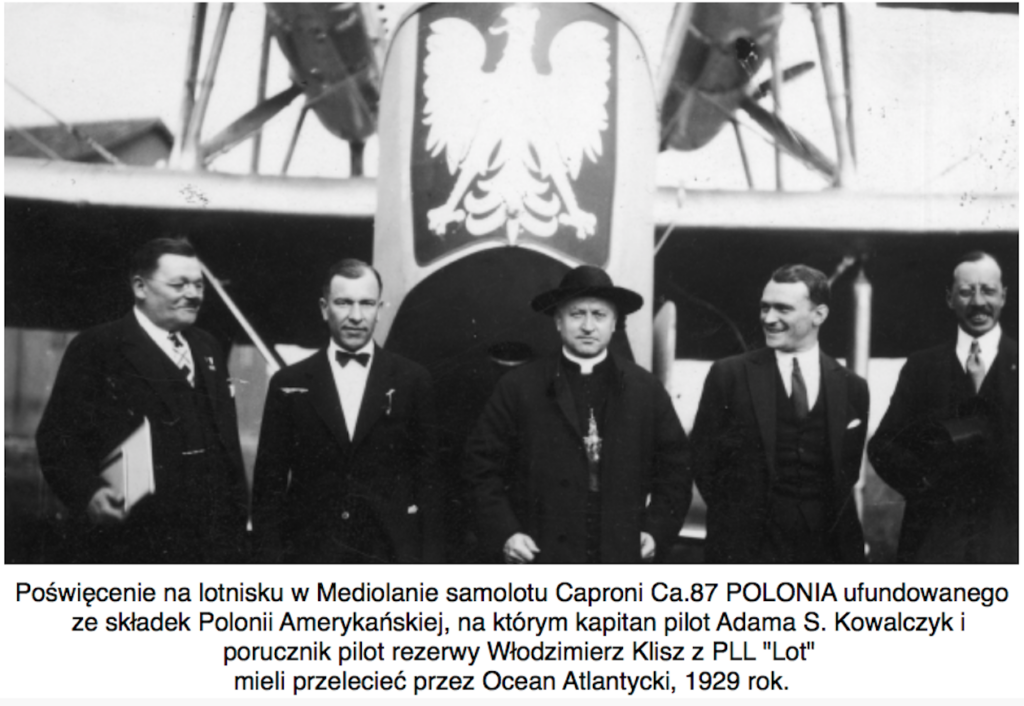
Photo description: Participants of the ceremony in front of the Caproni Ca.87 “Polonia” aircraft. Visible: Cardinal August Hlond (in the center), Polish American activist Adamkiewicz (first from the left), reserve pilot lieutenant from PLL LOT Włodzimierz Klisz (second from the left), captain pilot from the 3rd Air Regiment Adam S. Kowalczyk (fourth from the left), Polish Consul General in Milan Otto Hubicki (first from the right). The Polish emblem is visible on the aircraft.
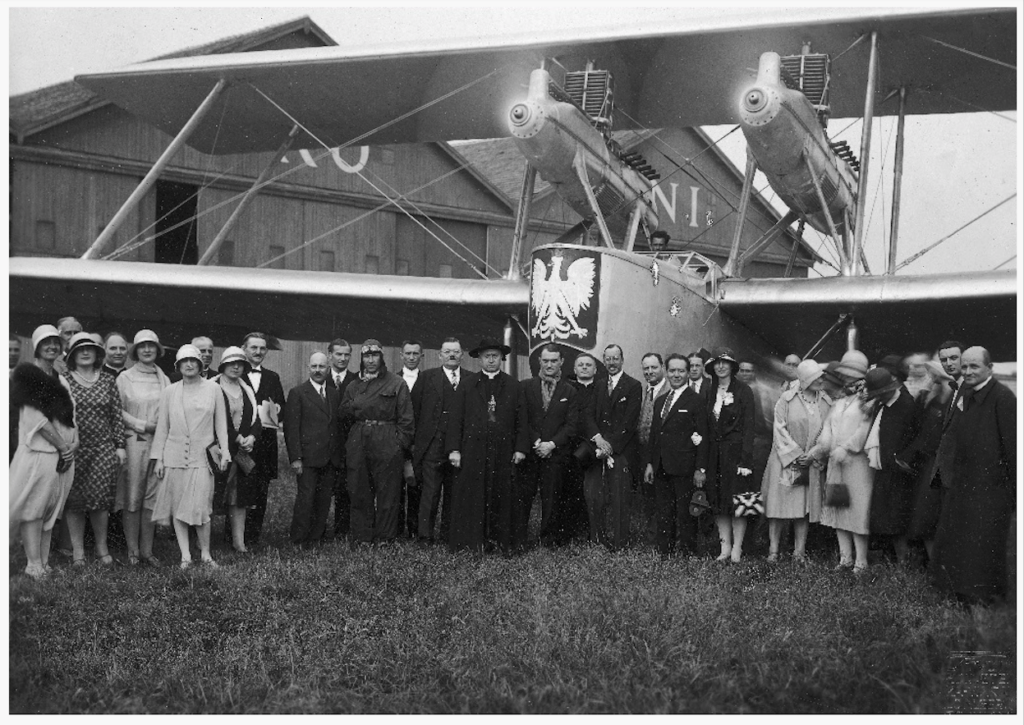
Photo description; Caproni Ca.87 Polonia aircraft. Participants in the aircraft christening. Pilot in the cockpit. Engines running. Milan airport, Caproni factory. 1929.
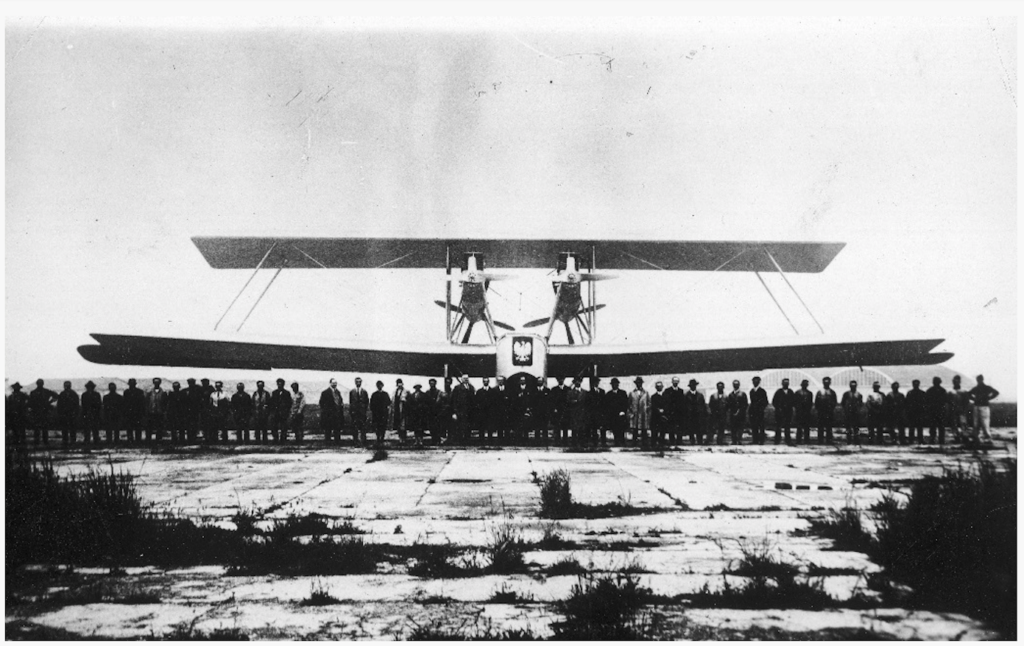
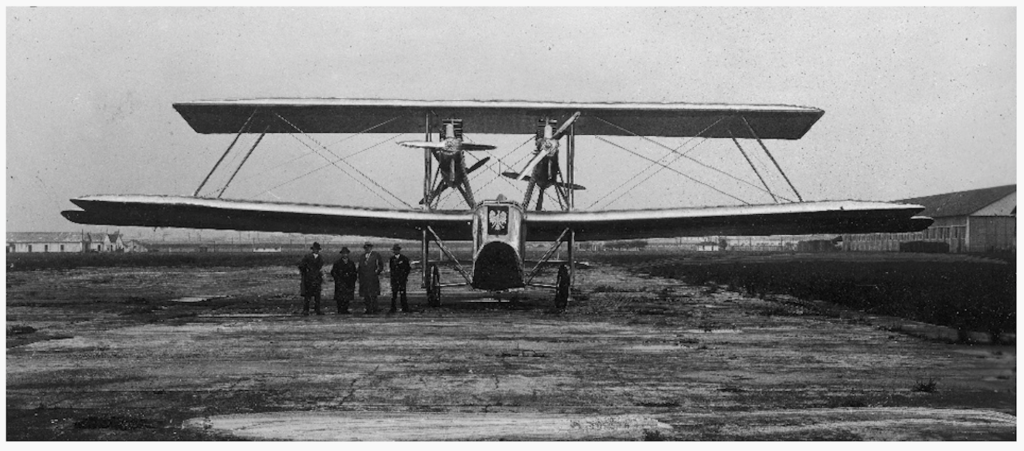

However, the engines did not work properly and were replaced with others. It is not known whether they were the same type of engines. Isotta-Fraschini Asso inline engines were produced in various power outputs of 155-195 kW (210-265 hp).
The flight was scheduled to begin on July 4, 1929, on Independence Day in the USA. Around June 25, 1929, the aircraft flew from Milan to Baldonnel, an airport in Ireland. The plan was to fly to Chicago with a stopover in Newfoundland. They waited for favorable weather conditions, especially favorable wind. However, the problems with the engines persisted. The decision to take off was delayed until July 13, 1929, when information about the Amiot 123 plane crash arrived. After the Amiot 123 plane crash, the Caproni Ca.87 Polonia flight was abandoned. After the flight attempt was abandoned, the plane remained in the Polish Army. According to most other sources, it was returned-sold to the manufacturer, changed to a bomber plane and incorporated into the Italian army.
Construction.
The Caproni Ca.87 Polonia plane has a wooden structure. It is a biplane, four-engine, two-seater.
Biplane wings. The upper wing is smaller than the lower one. Two-spar construction. Ailerons were mounted only on the lower wing. Wooden structure covered with fabric. The wings were reinforced with struts and wire tensioners.
The fuselage of the aircraft was of wooden construction, partly covered with plywood and partly with fabric. Waterproof plywood and waterproof glues were used, which was to ensure the buoyancy of the structure. Additionally, the lower part of the fuselage was shaped favorably for forced ditching. Additional fuel tanks were placed in the fuselage. Two pilots sit in an open cockpit.
Classic landing gear with main landing gear and rear skid.
Propulsion.
4 Isotta-Fraschini Asso inline engines with a power of 4 x 155-195 kW (4 x 210-265 hp). The engines were placed under two in two nacelles. The front engines had two-blade propellers, pulling. The rear engines had four-blade propellers, pushing.
T-T Ca.87 data:
Crew of two pilots. Dimensions length 15.10 m (49 ft 7 in), span 25.00 m (82 ft 0 in), height 5.60 m (18 ft 5 in), wing area 143.0 m2 (1,539 ft2), empty weight 4,000 kg, gross weight 6,100 kg. Maximum speed 180 km/h. Landing speed 100 km/h. Ceiling 4,600 m (15,080 ft). Range 5,000 km.
Written by Karol Placha Hetman

